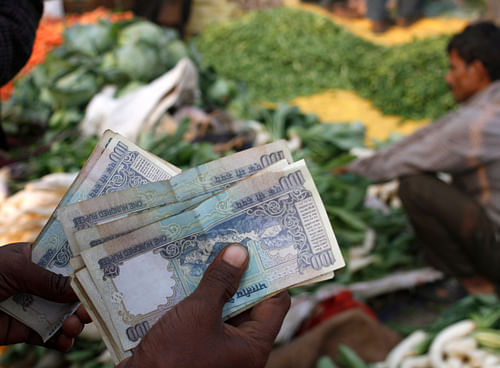
Costlier fruits and vegetables such as onions and tomatoes pushed retail inflation to a nine-month high of 11.24 per cent in November, making it harder for the Reserve Bank to lower interest rates.
Inflation as measured by the Consumer Price Index (CPI) for October was revised upwards to 10.17 per cent from the preliminary estimate of 10.09 per cent.
Vegetable prices rose 61.6 per cent in November from a year earlier, compared with a 45.67 per cent increase in the previous month, according to government data released today. Fruit prices rose 15 per cent.
Pulses were dearer by 1.2 per cent, cereals by 12.07 per cent and milk products by 9.06 per cent in November. The price rise of protein-rich items such as eggs, meat and fish was 11.96 per cent.
Inflation in the food and beverages segment was 14.72 per cent compared with 12.56 per cent in the previous month.
Inflation, which was in double digits for several months until March, declined to 9.39 per cent in April and came back to double digits in October.
The data showed that the provisional inflation rates for rural and urban areas for November were 11.74 per cent and 10.5 per cent, respectively.
For CPI inflation, price data are collected from select towns by the National Sample Survey Organisation and from certain villages by the Department of Posts.
Data on inflation based on the wholesale price index is scheduled to be released on Monday.
The Reserve Bank, scheduled to announce its monetary policy review on December 18, hiked the key lending rate by 0.25 per cent at each of its previous two policy reviews to contain inflation.
RBI Governor Raghuram Rajan yesterday said the central bank will look into all economic data while deciding on the policy rate.